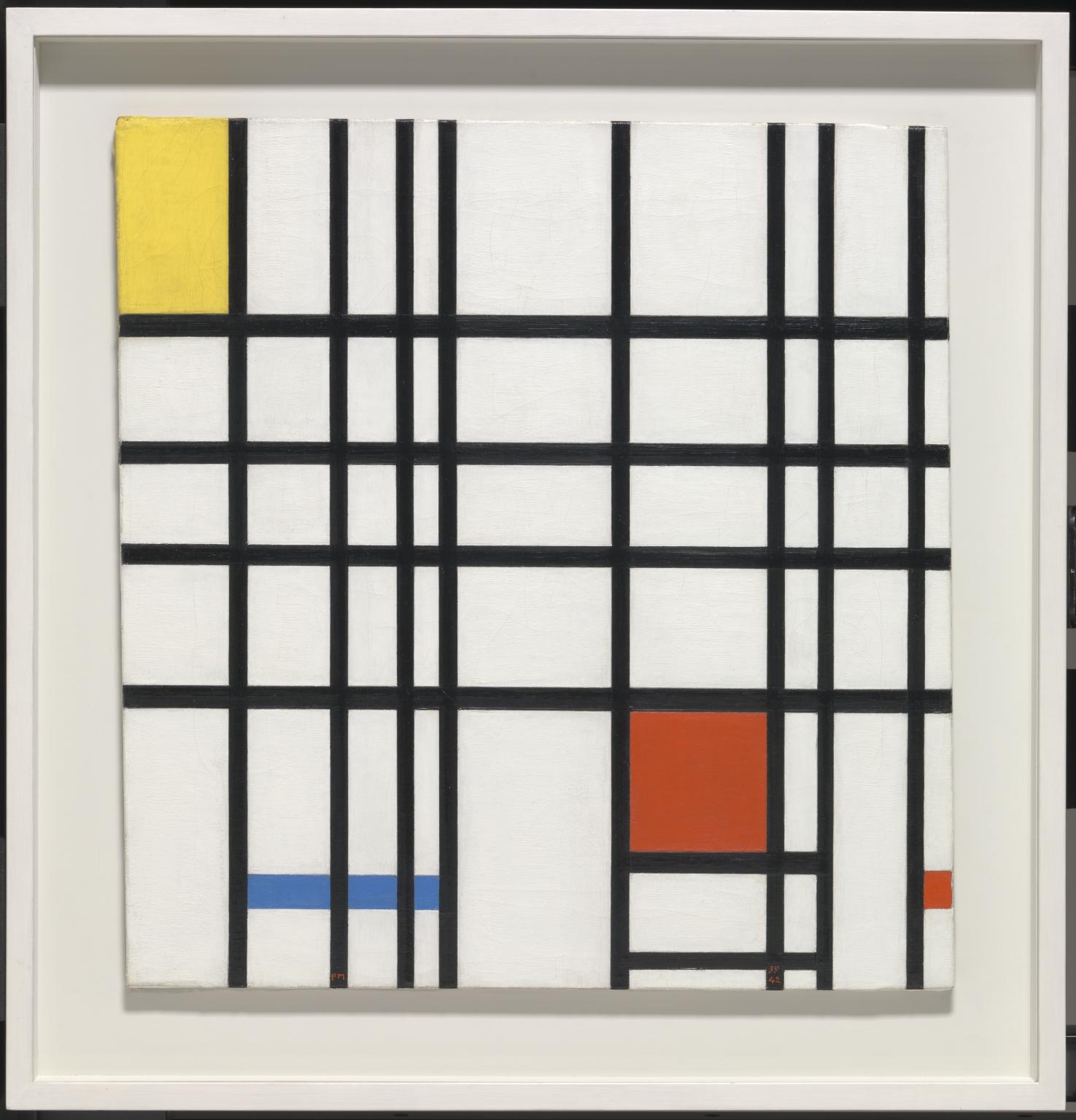Shape builds on line and color, as it has to be made of one or both of these. Shape is the property of a two-dimensional form, usually defined by a line around it or by a change in color.
There are two main types of shapes, geometric and organic. While most works of art contain both geometric and organic shapes, looking at those that are more completely divided can serve to clarify these qualities.
Geometric shapes
Piet Mondrian is an excellent example of an artist who used geometric shapes almost exclusively. In his Composition with Yellow, Blue and Red (1937-42), Mondrian, uses straight vertical and horizontal black lines to divide his canvas into rectangles of primary colors.

Piet Mondrian, Composition with Yellow, Blue and Red, 1937–42, oil on canvas, 72.7 x 69.2 cm (Tate, CC-BY-NC-ND 3.0)
Nothing here gives the impression of the natural world. On the other hand, Maori facial tattooing, known as moko, uses primarily organic shapes. They are still, like Mondrian’s shapes, generally abstract — they do not depict any clear images — but the shapes are like those found in nature, curving, twisting, and spiraling across their wearers’ faces. The edges of the lines and shapes are crisp, but the forms are curving and sensuous.

Moko (photo: James Heremaia, license information)

Korwar), late 19th–early 20th century, Indonesia, Papua Province (Irian Jaya), Cenderawasih Bay region, in northwest New Guinea, wood and glass beads, 26 cm high (The Metropolitan Museum of Art)
Form
Form is actual, three-dimensional shape, though it is often used to describe the illusion of three-dimensionality, as well. Like shape, form can be geometric or organic.
A small korwar — a representation of an ancestor — from Irian Jaya, New Guinea, mixes these form types well. While the figure is predominantly geometric, with the head shaped like a cube and the nose an arrow pointing downward, the curving organic lines around the eyes soften this effect a bit.

